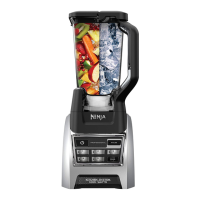blade assembly and places it onto the gear shaft. Once the user has added the desired ingredients,
the lid is placed on top of the pitcher and locked into place.
See Ninja BL685 Owner’s Guide, pg. 5.
16. Unlike the pitcher and the pitcher lid, the blade assembly does not lock into place,
and is not otherwise secured to the gear shaft. Instead, the blade assembly sits “loosely on the drive
gear.”
1
17. As a result, if the user pours the pitcher after removing the lid, or if the lid falls off
the pitcher during pouring, the loose blade assembly can easily fall out of the pitcher and onto
consumers, resulting in physical injuries such as severe lacerations.
18. Defendant SharkNinja became aware of this defect as early as November 12, 2015,
when, in conjunction with the Consumer Product Safety Commission (CPSC), it recalled roughly
1.1 million of its Ninja BL660 series blenders for this exact defect.
2
1
See Ninja BL685 Owner’s Guide, pg. 8. A copy of the Owner’s Guide is attached hereto as
“Exhibit A.”
2
See the CPSC Recall Notice from November 12, 2015
(https://www.cpsc.gov/Recalls/2016/Laceration-Injuries-Prompt-SharkNinja-to-Recall-Ninja-
BL660-Blenders), a copy of which is attached hereto as “Exhibit B.”
Case 2:23-cv-02144 Document 1 Filed 03/20/23 Page 4 of 11 PageID #: 4

